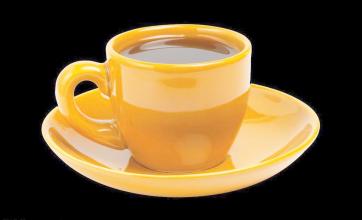Introduction to the grinding scale of the variety characteristics of the coffee bean flavor description method
Introduction to the grinding scale of the variety characteristics of the coffee bean flavor description method
The three are distinguished according to the time of sun exposure and the amount of pectin, and the amount of pectin and endocarp determines the time of sun exposure. "Yellow honey" is with 25% endocarp, 50% "red honey" and 100% "black honey". Therefore, from "yellow honey" to "black honey", the drying time is longer and the management requirements are more stringent.
If you have to pick out the advantages and disadvantages of the three, the best taste is "black honey", because the endocarp is the most abundant and the taste is richer and stronger. So why produce "yellow honey" and "red honey"? Coffee farmers also need to consider from a commercial point of view, that is to say, to produce "black honey" requires twice as many other kinds of drying beds and requires more time, manpower and energy; and not all buyers have the financial ability to buy "black honey", so the production of "yellow honey" and "red honey" can be said to be a choice for the coffee production environment.
Washing method: the peel, pulp and mucous membrane are removed by washing and fermentation. This method is also known as the complete washing method (Fully Washed). Shampoo is the most common way for most coffee-producing countries in the world to handle Arabica coffee beans. Some areas also use advanced high-pressure washing machines to clean the peel, pulp and mucous membrane of coffee beans, so fermentation is no longer needed. This method of using a high-pressure washing machine to treat coffee beans is called Natural washing (Pulped Natural). Natural sun treatment: retain all substances 22. Honey treatment: remove the peel and pulp and retain some or all mucous membrane (honey) coffee beans: each fruit contains 2 coffee beans (except one pod single bean Peaberry). The fruit of this kind of coffee contains only one coffee bean. Normally, 5% of each batch of coffee beans is a single pod. Coffee beans are dried and processed to bake silver skin (Silver Skin/Chaff): there is a thinner film inside the parchment that surrounds the beans. Because the color is glossy and silvery, people used to call it "silver skin". This layer of silver will fall off during baking. Usually when you grind the coffee, you find some silver crumbs in the coffee powder. These crumbs are the silver peel and Skin/Pulp that cannot be peeled off from the coffee bean during baking: the outermost layer of the coffee bean is wrapped in a berry-like skin and pulp. In addition to the natural sun method, coffee beans treated by other methods must remove the skin and flesh within a few hours after picking. Similar to the cherries we often eat, the difference is that when we eat cherries, we mainly eat the pulp and peel of berries. For coffee, peel and pulp are important by-products. In some places, people use the peel and pulp of coffee to make tea. People in the industry used to call the peel and pulp of coffee "Pulp". The machine used to remove the pulp is called the "desizing machine".

Important Notice :
前街咖啡 FrontStreet Coffee has moved to new addredd:
FrontStreet Coffee Address: 315,Donghua East Road,GuangZhou
Tel:020 38364473
- Prev

Introduction to simple and ordinary skills of drawing flowers and milking of coffee
Simple and ordinary coffee drawing and milking skills introduce that when we make good milk bubble tissue, there are many different ways, but they all include two stages: the first stage is to get rid of, that is, to put in steam to make the volume of milk foamy, and the second stage is to soak the foaming milk, which is to put the foamed milk into the air by means of swirls, and to make the larger one.
- Next

Introduction to the basic tutorials and production methods of Coffee pattern Materials
Introduction to the basic tutorials and production methods of Coffee pattern Materials: this thing is the most easily overlooked, although it is inconspicuous, but it doesn't work either.
Related
- What is the meaning of lactic acid fermentation with coffee bean treatment?
- How to judge the state of foam by sound?
- How does the latte pull out the unicorn pattern? Come to get for a little trick to improve the flower pull!
- Will flower pulling affect the taste of the latte?
- Do you know the history of coffee?
- The difference between honey treatment and sun washing what is raisin honey treatment?
- What kind of milk can a novice use to make coffee foam to keep the foam longer? The correct method and skills of milking tutorial sharing
- Why do washed coffee beans taste sour? Flavor characteristics of washed Coffee
- Introduction to the skill of how to practice the size and height of water injection around the circle of hand-brewed coffee
- How do beginners practice coffee flower drawing from scratch?

